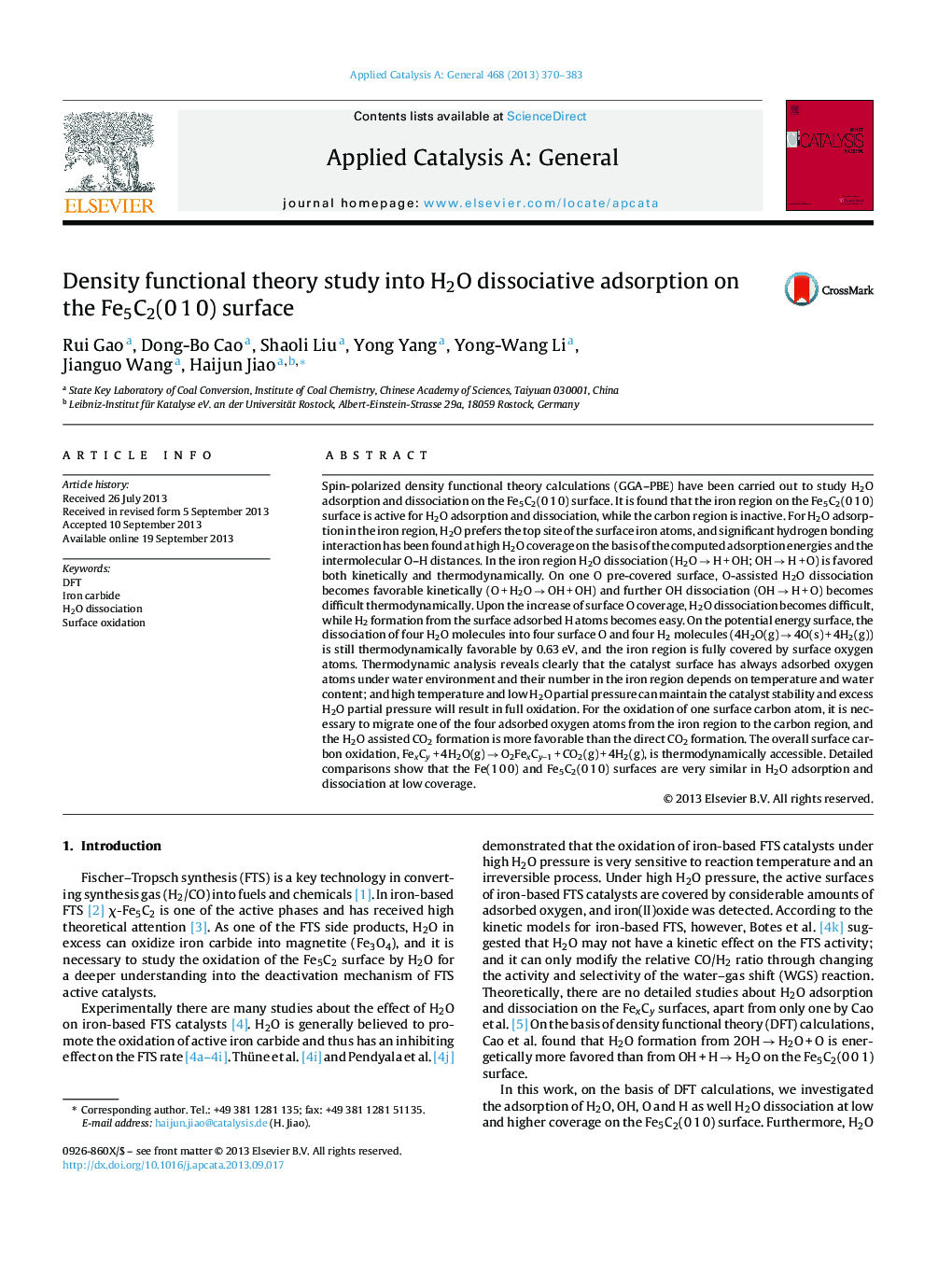| Article ID | Journal | Published Year | Pages | File Type |
|---|---|---|---|---|
| 40270 | Applied Catalysis A: General | 2013 | 14 Pages |
•H2O dissociative adsorption on the χ-Fe5C2(0 1 0) surface was investigated.•The χ-Fe5C2(0 1 0) surface has both iron and carbon regions.•Surface iron region is active for H2O dissociative adsorption and H2 formation.•Pre-adsorbed oxygen atoms play a significant role for further H2O adsorption.•Surface carbon region is inactive for H2O dissociative adsorption.
Spin-polarized density functional theory calculations (GGA–PBE) have been carried out to study H2O adsorption and dissociation on the Fe5C2(0 1 0) surface. It is found that the iron region on the Fe5C2(0 1 0) surface is active for H2O adsorption and dissociation, while the carbon region is inactive. For H2O adsorption in the iron region, H2O prefers the top site of the surface iron atoms, and significant hydrogen bonding interaction has been found at high H2O coverage on the basis of the computed adsorption energies and the intermolecular O–H distances. In the iron region H2O dissociation (H2O → H + OH; OH → H + O) is favored both kinetically and thermodynamically. On one O pre-covered surface, O-assisted H2O dissociation becomes favorable kinetically (O + H2O → OH + OH) and further OH dissociation (OH → H + O) becomes difficult thermodynamically. Upon the increase of surface O coverage, H2O dissociation becomes difficult, while H2 formation from the surface adsorbed H atoms becomes easy. On the potential energy surface, the dissociation of four H2O molecules into four surface O and four H2 molecules (4H2O(g) → 4O(s) + 4H2(g)) is still thermodynamically favorable by 0.63 eV, and the iron region is fully covered by surface oxygen atoms. Thermodynamic analysis reveals clearly that the catalyst surface has always adsorbed oxygen atoms under water environment and their number in the iron region depends on temperature and water content; and high temperature and low H2O partial pressure can maintain the catalyst stability and excess H2O partial pressure will result in full oxidation. For the oxidation of one surface carbon atom, it is necessary to migrate one of the four adsorbed oxygen atoms from the iron region to the carbon region, and the H2O assisted CO2 formation is more favorable than the direct CO2 formation. The overall surface carbon oxidation, FexCy + 4H2O(g) → O2FexCy–1 + CO2(g) + 4H2(g), is thermodynamically accessible. Detailed comparisons show that the Fe(1 0 0) and Fe5C2(0 1 0) surfaces are very similar in H2O adsorption and dissociation at low coverage.
Graphical abstractFigure optionsDownload full-size imageDownload high-quality image (344 K)Download as PowerPoint slide
